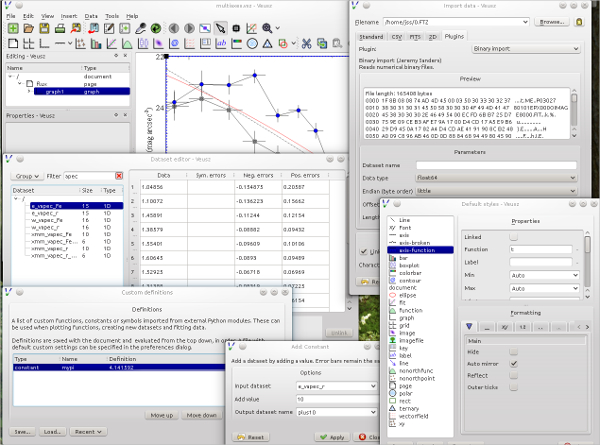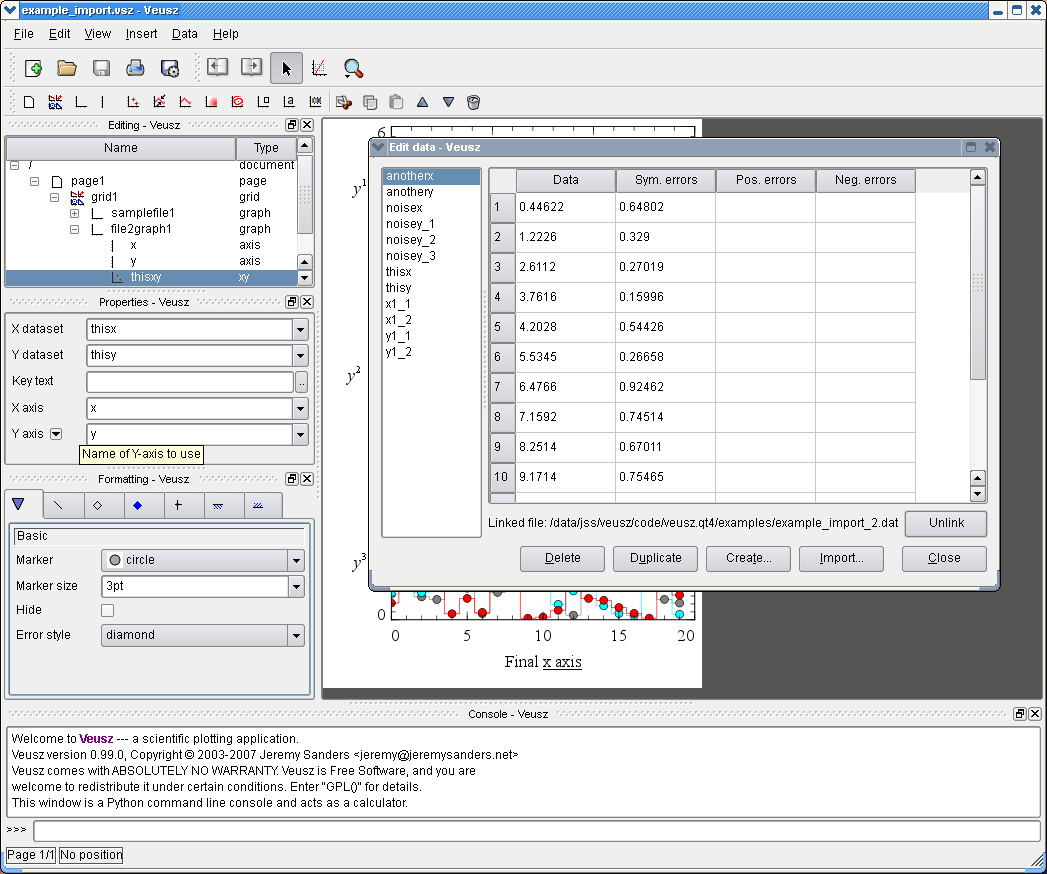

- #Veusz copy dataset from existing file software#
- #Veusz copy dataset from existing file code#
- #Veusz copy dataset from existing file free#
You can also use it as a python module for plotting, using the same command interface as the saved plots use.In all my Veusz files I'm used to create 2D datasets "from expression based on existing 2D dataset". You can make publication-quality graphs or plots through Mayavi. The program is written in Python and distributed under the BSD license. It provides a rich graphical user interface which uses VTK.

#Veusz copy dataset from existing file free#
One nice thing is that the saved files are simply python commands to regenerate the plot, so it's easy for the user to automate making plots. Mayavi is a modern and free scientific data visualizer to create interactive 3D plots. The next release should support Python 3, too.
#Veusz copy dataset from existing file code#
There's a bit of C++ code to handle the inner loops, but it's pretty responsive. Most of Veusz is written in Python with PyQt. When plotting, you can just enter expressions to investigate your data. There are a set of data manipulation plugins for filtering and so on (again you can write your own). You can easily write a plugin to load your own file format. Data is stored in named datasets, linked to external files or entered manually, or you can even capture it from sockets or external programs. I want the 0 value which is present at the 50th position the needs to added in the second file at 50th position, so how i can do it using JCL using a sort step. Below is the screenshot of the second dataset. Below is the screenshot of the first dataset. It's now gained more data manipulation abilities. My question is i want to append one value from one dataset to another dataset. Each widget has a set of properties and formatting settings which can be changed. The widgets are arranged in a tree, a page holds a graph or a grid of graphs and a graph has axes and plotting widgets, and so on. In addition it can be used as a module in Python for plotting. I started with the idea that graphs should be built in an object-oriented fashion out of widgets. Veusz is a scientific plotting and graphing program with a graphical user interface, designed to produce publication-ready 2D and 3D plots. Hopefully it's a good competitor to these (people tell me so), but I hadn't used them before embarking on Veusz! I mainly got annoyed with the state of command-line plotting facilities in astronomy and unix (like IDL, gnuplot, etc). I've been using xmgrace recently simply because it launches quickly, but it's (understandably) not retina and not native and just a pain really. matplotlib and its ilk are fine but require custom scripting. I personally find DataGraph's interface horrendous, even though its graphs are good, and Excel takes forever to make anything remotely decent. I usually use Plot ( ) which is great (scriptable, produces good looking graphs) but has a bit of a clunky interface. Though, sadly, it looks like this port doesn't replicate ggplot2's graphs pixel-for-pixel, which is a shame.Įdit: Incidentally if anyone has a recommendation for a good graphing app for OS X, I'd be all ears. Veusz is a scientific plotting package, designed to create publication-ready. A lot of thought has gone into ggplot2's default theme.
#Veusz copy dataset from existing file software#
It's more for creating good looking, publication-quality graphs. LabPlot is an open-source scientific plotting software that works on multiple platforms like Linux, Windows, and Mac OS.

matplotlib which I suspect is more powerful overall. This is really exciting! I've always liked ggplot2 but sadly struggled with R syntax (the only time I ever used it was for ggplot2, and found it really confusing).įor anyone reading this, I don't think this is intended to replace e.g.


 0 kommentar(er)
0 kommentar(er)
